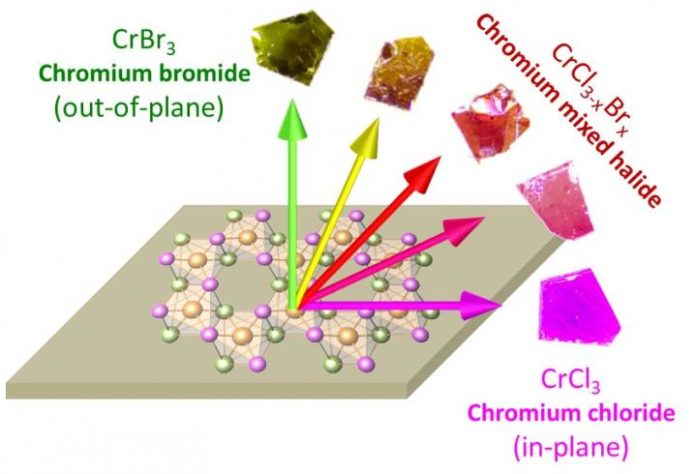Physicists, scientific experts, and materials researchers have been examining the idea of layered magnetic materials for a very long while, hunting down pieces of information to the properties of these materials that are more unpredictable than they show up.
The layered material looks like the structure of a book. From a distance, it would appear that a strong three-dimensional object however when analyzed all the more intently, it is produced using the stacking of some level, two-dimensional sheets like the pages of a book.
Amid the previous decade, researchers have sought after the “exfoliation” of layered magnetic materials, a procedure by which a material is deliberately divided until the point that a single nuclear sheet is confined.
Until now, scientists were aware of only the in-plane or the out-of-plane limits of magnetic anisotropy. But now, Boston scientists have discovered that magnetic anisotropy can be continuously tuned between the two limits of in-plane and out-of-plane. The group reports it accomplished this progress in the field of ultrathin magnetic devices by effectively indicating the polarization any bearing of a room rather than just in-plane or out-of-plane.
Scientists initially demonstrated a “mixed-halide chemistry” approach where researchers combined different halide atoms, such as chlorine or bromine, around a transition metal such as chromium. They then adjusted the relative composition of chlorine to bromine. This enables scientists to adjust an internal parameter at the atomic level known as the spin-orbit coupling which is the source of magnetic anisotropy.
Boston College Assistant Professor of Physics Fazel Tafti, lead author of the paper said, “In addition to magnetization direction, our team showed that all properties of these layered materials including light absorption, a distance between the layers, and temperature of magnetic transition can be continuously controlled to any desired value. This is a leap of progress in tuning materials properties for optical and magnetic device industry.”
“By adjusting the relative composition of chlorine to bromine, the researchers were able to adjust an internal parameter at the atomic level known as the spin-orbit coupling which is the source of magnetic anisotropy. ”
“Advancing these types of materials will form the basis of next-generation ultrathin magnetic devices. In the future, these devices may one day replace the transistors and electric chips used today. Because of their atomic scale, further advances will likely shrink the size of magnetic devices as capabilities allow magnetic information to be composed on these atomically flat sheets.”
“From here, we will continue to push the frontiers of magnetic layered materials by making mixed halides of transition metals other than chromium. Our team demonstrated that the mixed halide chemistry is not limited to chromium and can be generalized to over 20 other transition metals. The co-leader of the project, Kenneth Burch, is trying to artificially interface different magnetic layers so the properties of one layer would affect the adjacent one. Such metamaterials can change the propagation of light in one layer based on the direction of magnetism in the neighboring layer and vice versa – a property known as the magneto-optical effect.”
Scientists reported about their research in the journal Advanced Materials.
